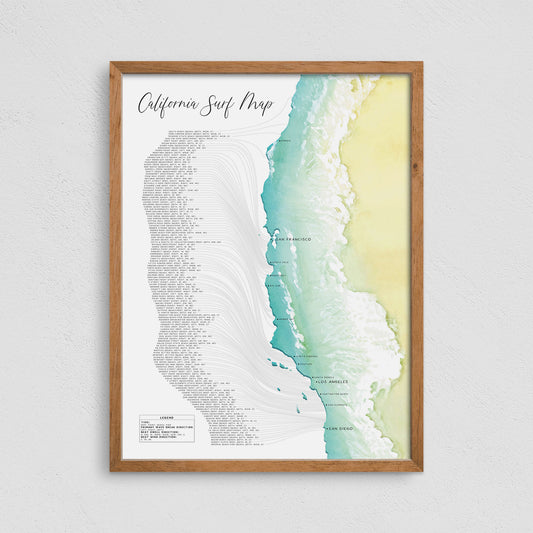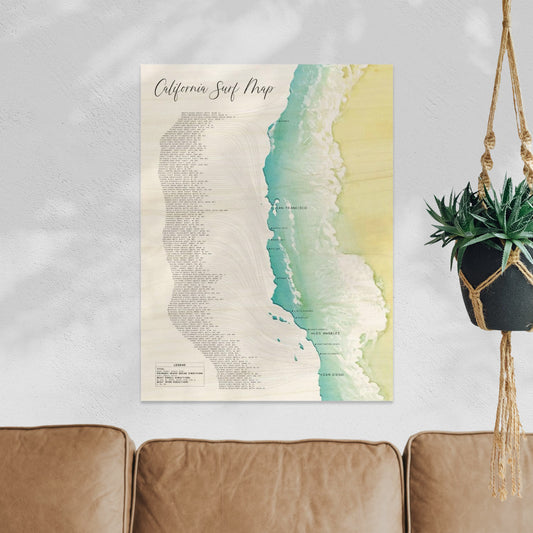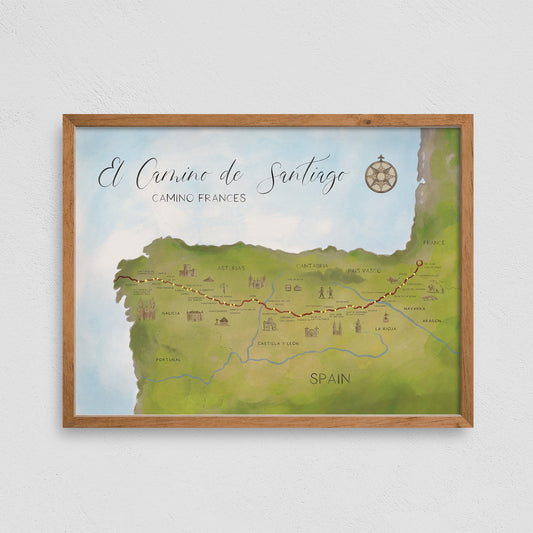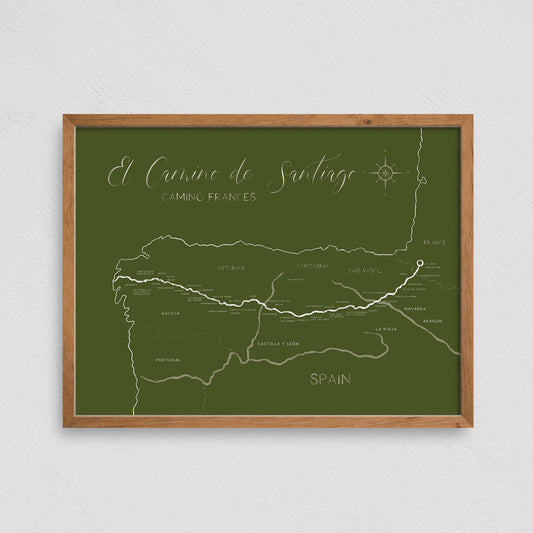
History of the Camino and the Perfect Map of El Camino de Santiago
Share
For centuries, travelers from around the world have walked across the sun-drenched hills, stone-paved villages, and ancient Roman roads of northern Spain on a path known as the Camino de Santiago. It’s more than just a long-distance trek — it’s a spiritual pilgrimage, a physical challenge, and a cultural immersion all rolled into one.
Among the many routes to Santiago de Compostela, none is more iconic than the Camino Francés — the French Way. It’s a journey steeped in history, faith, and community. And whether you're planning to walk it or want to commemorate the experience, a map of El Camino de Santiago becomes much more than a navigational tool — it becomes a piece of your story.
Let’s explore the magic of the Camino Francés, its rich historical tapestry, and why the Sander Maps Camino de Santiago Map Art is the ultimate gift for the passionate hiker, pilgrim, or travel enthusiast in your life.
What Is the Camino de Santiago?
The Camino de Santiago, or “The Way of St. James,” is a network of ancient pilgrimage routes leading to the shrine of the apostle Saint James the Great in the cathedral of Santiago de Compostela, in Galicia, Spain.
Dating back to the 9th century, these routes have been traveled by millions — from devout pilgrims seeking spiritual renewal to modern-day adventurers craving solitude, reflection, and connection.
The Camino is not a single route, but rather a system of pathways. Among these, the Camino Francés stands out as the most well-known and frequently walked route, attracting over 60% of all pilgrims who arrive in Santiago each year.
The History of the Camino Francés
The Camino Francés stretches approximately 780 kilometers (485 miles) from Saint-Jean-Pied-de-Port on the French side of the Pyrenees to Santiago de Compostela. It passes through stunning and diverse landscapes: the snowcapped peaks of the Pyrenees, the sweeping plains of the Meseta, and the lush greenery of Galicia.
This route gained prominence during the Middle Ages, bolstered by the support of monarchs, the Catholic Church, and the rise of Santiago as a major religious center. By the 12th century, the Camino Francés was well-established, with a network of monasteries, hospitals, and bridges built to support pilgrims on their journey.
The route was immortalized in the Codex Calixtinus, a 12th-century guidebook that provided early pilgrims with practical information — a medieval version of the trail guides used today.
Walking the Camino Francés is like stepping into a living museum. From the Gothic cathedrals of Burgos and León to the Romanesque bridges and medieval villages, the trail offers a tangible connection to Europe’s cultural and religious heritage.
Why the Camino Still Matters Today
Despite its religious origins, today’s Camino is walked by people of all beliefs and backgrounds. Some walk for spiritual reasons, others for personal transformation, fitness, or simply the thrill of adventure. Along the way, bonds are formed with fellow travelers, stories are shared, and inner peace is often discovered.
One of the most beautiful aspects of the Camino is that it doesn’t end at the cathedral in Santiago. The experience stays with you — in your heart, your body, and your memories. And for many pilgrims, a map of El Camino de Santiago becomes the perfect way to honor that unforgettable journey.
The Perfect Gift: Sander Maps Camino de Santiago Map Art
If you're looking for a gift that truly captures the soul of the Camino — whether for yourself or someone who’s walked it — look no further than the Sander Maps Camino de Santiago Map.

Why It Stands Out:
1. Aesthetically Stunning
This isn’t your average trail map. Sander Maps transforms the entire Camino Francés route into a beautiful piece of wall art. Every twist and turn, every mountain pass and village stop is meticulously plotted, creating a visual journey that sparks nostalgia and admiration.
2. Hand-Drawn and Detailed
Crafted with care, these maps are hand-designed with topographic accuracy and artistic flair. The map highlights major waypoints like Pamplona, Logroño, Burgos, León, and O Cebreiro, letting walkers trace their steps and relive key moments.
3. A Conversation Starter
Whether hung in an office, living room, or studio, it’s the kind of piece that invites storytelling. It’s a quiet monument to a life-changing journey — and the perfect way to share the Camino spirit with friends, family, and fellow travelers.
4. Perfect for Any Occasion
Birthdays, anniversaries, retirement gifts, or “just because” — the Sander Maps Camino de Santiago Map Art is ideal for any hiker, traveler, or dreamer who’s ever walked (or dreamed of walking) the Camino.
A Legacy on the Wall
As any pilgrim will tell you, the Camino changes you. It simplifies life. It breaks you down and builds you back up. It teaches you the value of small steps, shared meals, and open hearts.
Whether you’ve completed the walk, plan to walk it someday, or simply admire those who do — having a map of El Camino de Santiago on your wall is a way to keep the Camino alive in your daily life.
And when it comes to maps that are both meaningful and beautiful, Sander Maps delivers a piece of art that’s worthy of the journey.
The Camino de Santiago is more than just a hike — it’s a timeless pilgrimage that continues to call people from all walks of life. And the Camino Francés, with its deep roots and epic landscapes, is its most cherished path.
A map of El Camino de Santiago, like the stunning one from Sander Maps, is more than just a memento — it’s a reflection of courage, resilience, and the simple magic of putting one foot in front of the other.
If you or someone you love has walked the Camino, give them a gift that brings those memories home.





